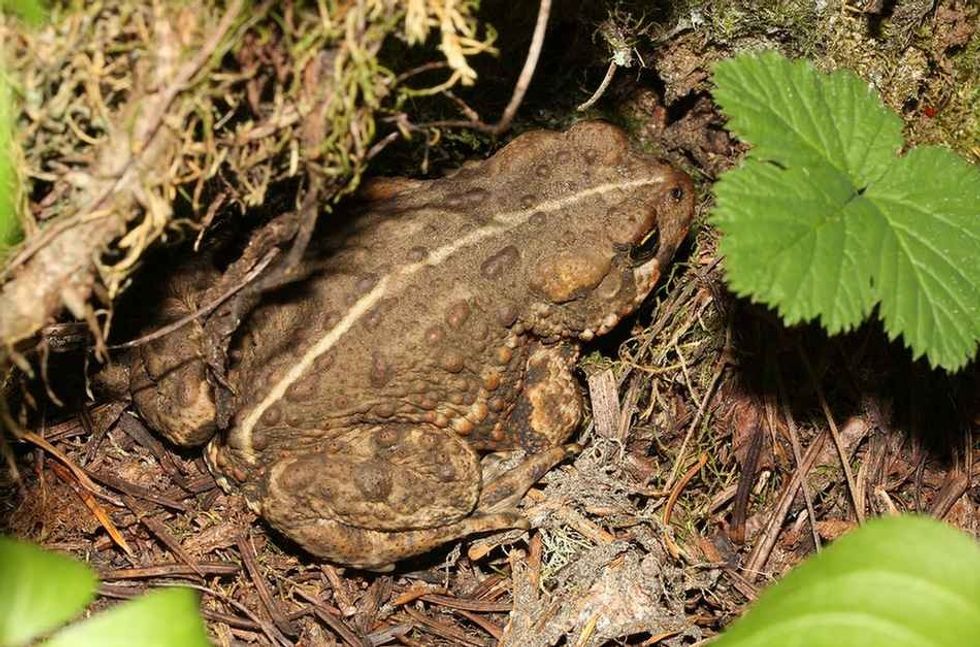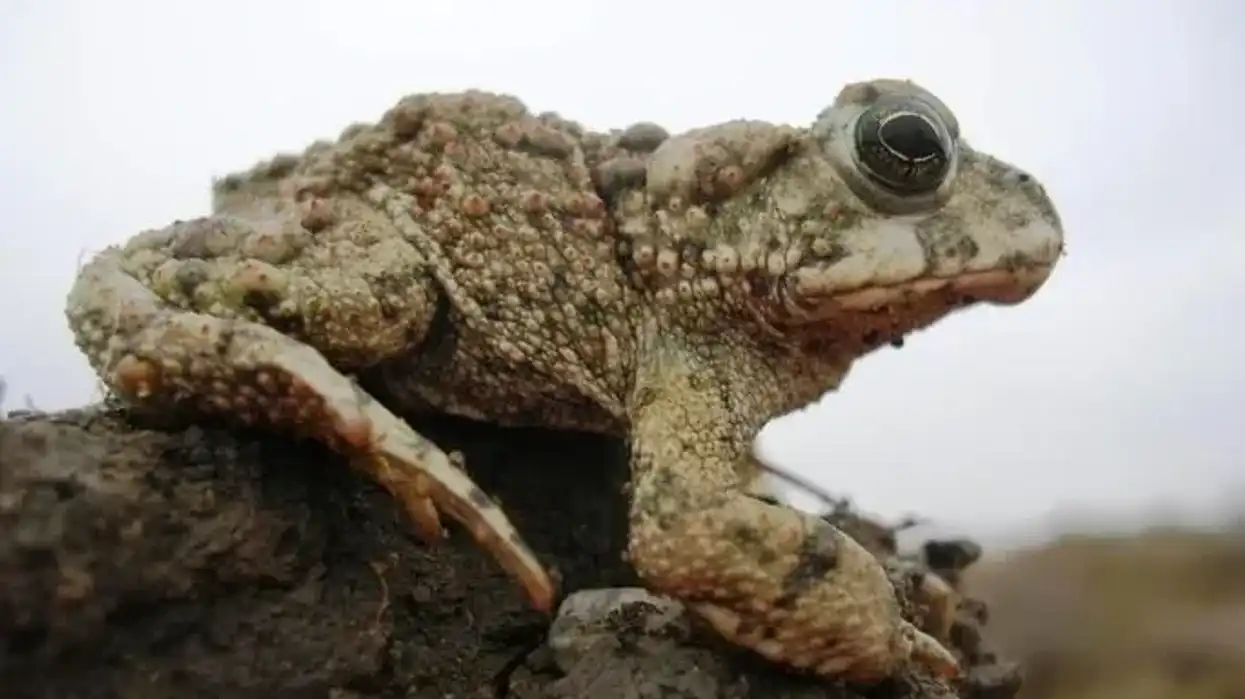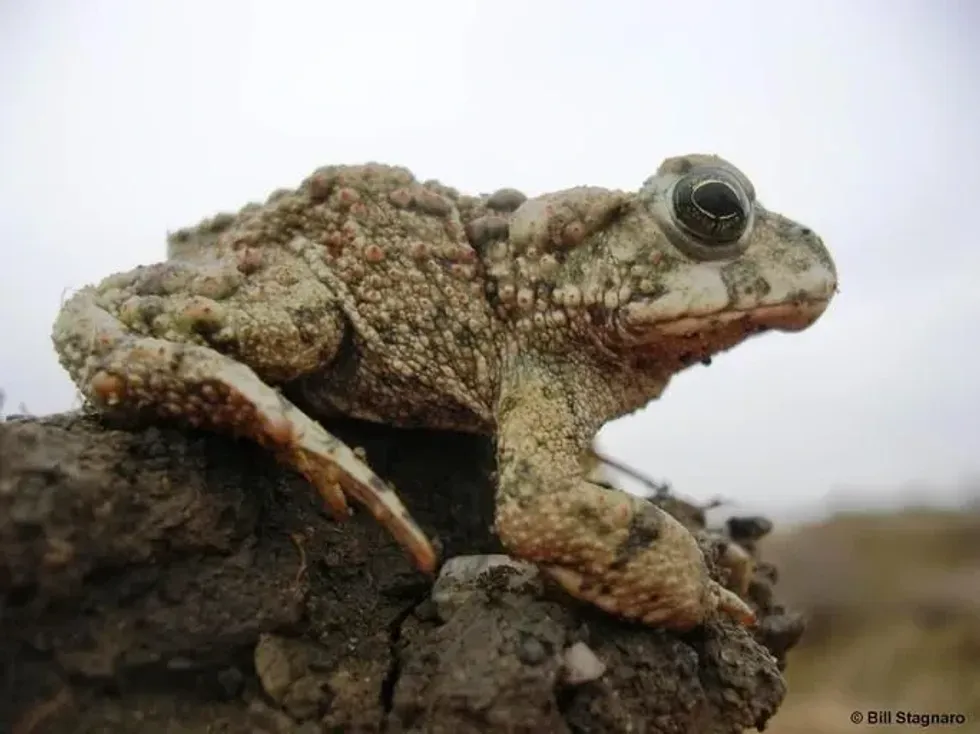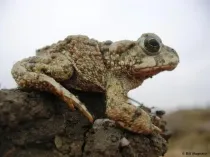Fun Western Toad Facts For Kids

The western toad (Anaxyrus boreas) is a species of toad from the Anaxyrus genus of the Bufonidae family. This species of toad have two subspecies under it, the California toad and the Boreal toad.
They were previously known as Bufo boreas. These toads are native to the Western range of North America. They are spotted in Washington, Southern Alaska, North Central California, Sierra Nevada, Montana, Colorado, and New Mexico.
A small population is spotted in the high elevations of the Rocky Mountains as well. However, they are more lively and active in lower elevations.
Their habitat includes forests, grasslands, mountain meadows, and wetlands. In higher elevations, they take shelter in underground chambers near streams, during the hibernation period.
They are mostly found near water bodies. Western toads are carnivorous toads, and on the other hand, they are prey to various reptiles and birds of prey. The western toad is listed as of Least Concern by the International Union For Conservation of Nature (IUCN) Red List.
However, they are not listed by the U.S Fish and Wildlife Service. Due to loss of habitat, predation, and Chytrid fungus infections, the strength of their population is decreasing.
Western toads' breeding period takes place between February and April but can be extended until July. Male toads are capable of breeding every year. They are egg-laying creatures and their eggs are laid in egg masses, containing up to 16,500 eggs. The tadpoles have a dark-colored, round-shaped fin, which is spotted through the length of their tails.
To learn more, we have collected a set of interesting facts about western toads for you to read. You can also learn more about fascinating wildlife and toads by reading up more articles on toads and Surinam toads.
Western Toad Interesting Facts
What type of animal is a western toad?
The western toad (Anaxyrus boreas) is a large-sized amphibian from the Anaxyrus genus. These toads were previously known as Bufo boreas. Boreal toads (Anaxyrus boreas boreas) and California toads (Anaxyrus boreas halophilus) are two subspecies of western toads.
What class of animal does a western toad belong to?
Western toads belong to the Amphibia class of the Animalia kingdom.
How many western toads are there in the world?
Being a common and widely available species, the exact number of the population of western toads is as yet unknown. According to the International Union for Conservation of Nature (IUCN) Red List, the strength of populations of western toads is decreasing, due to pollution, various predators such as reptiles and birds of prey, and loss of habitat as well.
They are native to the western part of North America.
Where does a western toad live?
Western toads are found in Washington, Southern Alaska, North Central California, Sierra Nevada, Montana, Colorado, and New Mexico. Apart from these U.S territories, they are spotted in British Columbia and Alberta in Canada as well. Boreal toads are spotted in the Rocky mountains. If you want to spot a western toad, you can visit the Rocky Mountain National park.
What is a western toad's habitat?
Western toads can live in various habitats, such as forests, grasslands, shrublands, wetlands such as ponds, lakes, and even coastal areas. Most of the time they are spotted near water bodies. This toad prefers forests with an abundance of shrubby cinquefoil, willow, oak, pine, and big birch trees.
They primarily reside under the cover of a rock or log. Western toads are capable of digging shallow burrows as well. They can survive in the mountain meadows of the Pacific Northwest region.
In higher elevations, they spend their hibernation period in underground chambers near streams. In California, they live in riparian forests and dry mountain meadows. However, they require open water bodies as breeding sites.
Who do western toads live with?
In general, toads tend to live a solitary life. They form a pair right before the breeding season. However, the exact data for who western toads live with is as yet unknown.
How long does a western toad live?
Depending on their habitat and nutrition, western toads can live for up to 11 years. They are outlived by fire-bellied toads, who can live up to 20 years in captivity.
How do they reproduce?
Western toads' breeding season takes place between February and April but can be extended until July. During breeding seasons these toads prefer shallow water wetlands with high pH levels in the water in which to lay eggs. The warmth of shallow waters acts like a positive catalyst and speeds up the development of the eggs.
The minimum age for breeding of any male western toad can be three years and for a female can be between four and five years. However, the California toad subspecies become sexually mature at the age of two.
Male toads are capable of breeding every year. Eggs are laid in egg masses in shallow waters. These egg masses can contain up to 16500 eggs.
The metamorphosis phase of their life cycle ends after a period of three months since the eggs were laid. For their subspecies, the Boreal toad and the California toad, the required time for completing metamorphosis are 30-45 days and 28-45 days, respectively.
What is their conservation status?
Western toad (Anaxyrus boreas) species, also known as Bufo boreas, is listed as of Least Concern by the International Union For Conservation of Nature (IUCN) Red List. However, they have also stated that the strength of western toad populations is decreasing.
Western Toad Fun Facts
What do western toads look like?

Being amphibians, western toads have soft and smooth skin. They have bumpy dark blotches, with a small reddish center, and widely separated oval-shaped parotid glands. The dorsal stripe comes in shades of white or cream.
The dorsal stripe is not so prominent, or is completely absent, depending on the age of juvenile toads. The number of blotches on the skin is quite reduced when it comes to males. Thereby, male western toads have comparatively smoother skin than female western toads.
How cute are they?
For some, toads are cute and adorable, and for others, they may prefer to maintain a safe distance. However, western toads are indeed cute, with their beautiful dorsal stripes on their back.
Before touching a western toad, one must remember that their toxin is not strong enough to kill humans, but it will have a mild impact.
Their toxin may kill puppies, or small dogs and cats. So if you have a pet dog or cat in your house, make sure you build a safe cage for your pet western toad.
How do they communicate?
Similar to other species of toads, western toads communicate with others by making different sounds and body postures. However, they don't have a vocal sac. Biologists have stated that they make a chirping-like sound when they are captured.
How big is a western toad?
Western toads are typically 1.9-5.1 in (5-13 cm) in length. They are approximately two times larger than a fire-bellied toad, which is 1-2.3 in (2.6–6 cm) in length.
How fast can a western toad swim?
Similar to other species of toads, western toads can swim in freshwaters. The exact speed at which they swim is as yet unknown, however, it has been observed that they are not as good as other toads when it comes to swimming.
How much does a western toad weigh?
Though these amphibians are widely distributed, the exact bodyweight of this toad species is unknown.
What are their male and female names of the species?
There is no particular name given to the male and female western toads.
What would you call a baby western toad?
Baby western toads are simply called tadpoles. These tadpoles have charcoal or black-colored skin. A dark-colored, round-shaped fin is spotted through the length of their tails.
What do they eat?
Western toads follow a carnivorous diet, primarily including bees, grasshoppers, flies, detritus, mosquitoes, beetles, and arachnids. These amphibians are active at night and look for their prey.
They don't only have a carnivorous diet, when required, they can procure the required nutrition from plant-based diets such as various algae, non-aquatic and aquatic plants. These amphibians are preyed upon by various reptiles and birds, such as common ravens and more.
Are they dangerous?
These toads are non-aggressive amphibians and have never attacked a human first, in their life history. However, adult western toads may discharge a whitish toxin, which is mildly poisonous.
They emit this from their warts and parotid glands. This poison is not enough to kill humans, but it does have psychoactive properties. This poison can be fatal for your pet dog or cat.
Almost every toad has the tendency of peeing when they are being held by humans. Thereby, it is advised not to hold them with bare hands, and always wash your hands after handling them.
Would they make a good pet?
Western toads are a good choice as a pet. They are pretty easy to maintain and their non-aggressive nature makes them excellent pet amphibians.
It is advisable to carefully place them in a proper cage or aquarium, especially when you have other pets and children in your home. Another thing their owners should keep in mind is that these toads are especially vulnerable to Chytrid fungus.
To properly take care of them, ensure that they get their required nutrition. In captivity, their diet should include lots of crickets. Place a water dish in their cage and change the water from time to time.
Ensure proper room temperature suitable for them. In cold regions, the use of heat lamps is suggested. Keep them away from large-sized reptiles.
Did you know...
A Boreal toad is known for their high-pitched repeated calls they make during breeding seasons. This call sounds like the peeping of a chick.
Amphibians can breathe through their skin underwater. However, they don't sleep underwater.
Western toads are Not Listed by the U.S Fish and Wildlife service.
California toads are especially fond of Jeffrey pine forests, and the black oak woodlands of California.
In Colorado, multiple western toads die because of Chytrid fungus. Also, Colorado is full of various types of mines. The water drained from these mines is deadly to these poor toads.
Who eats toad?
Western toads are preyed upon by common ravens, snakes, raccoons, large-sized amphibians, birds of prey, such as spotted sandpipers, and by some small mammals as well.
Are toads nocturnal or diurnal?
Toads can be both diurnal and nocturnal. Western toads and many other species of toads are nocturnal. However, there are poison frog species, and their subspecies, that are diurnal amphibians.
Here at Kidadl, we have carefully created lots of interesting family-friendly animal facts for everyone to discover! Learn more about some other amphibians including the bullfrog and the American toad.
You can even occupy yourself at home by coloring in one of our free printable western toad coloring pages.
We Want Your Photos!
More for You
Bachelor of Arts specializing in Journalism and Mass Communication, Postgraduate Diploma in Sports Management

Moumita DuttaBachelor of Arts specializing in Journalism and Mass Communication, Postgraduate Diploma in Sports Management
A content writer and editor with a passion for sports, Moumita has honed her skills in producing compelling match reports and stories about sporting heroes. She holds a degree in Journalism and Mass Communication from the Indian Institute of Social Welfare and Business Management, Calcutta University, alongside a postgraduate diploma in Sports Management.
Bachelor of Arts specializing in English Language and Literature, Master of Arts specializing in Philosophy and Religious Studies

Tehil DavidBachelor of Arts specializing in English Language and Literature, Master of Arts specializing in Philosophy and Religious Studies
Tehil David Singh is a fact checker with a Bachelor's degree in English literature from St.Xavier's College, Palayamkottai, and a Master's degree in Philosophy, and Religion from Madurai Kamaraj University. He has a passion for writing and hopes to become a story writer in the future. Tehil has previously interned in content writing and has been a content creator for the last three years. In his personal life, he enjoys singing, songwriting, performing, and writing stories.
Disclaimer
1) Kidadl is independent and to make our service free to you the reader we are supported by advertising. We hope you love our recommendations for products and services! What we suggest is selected independently by the Kidadl team. If you purchase using the Buy Now button we may earn a small commission. This does not influence our choices. Prices are correct and items are available at the time the article was published but we cannot guarantee that on the time of reading. Please note that Kidadl is a participant in the Amazon Services LLC Associates Program, an affiliate advertising program designed to provide a means for sites to earn advertising fees by advertising and linking to Amazon. We also link to other websites, but are not responsible for their content.
2) At Kidadl, we strive to recommend the very best activities and events. We will always aim to give you accurate information at the date of publication - however, information does change, so it’s important you do your own research, double-check and make the decision that is right for your family. We recognise that not all activities and ideas are appropriate for all children and families or in all circumstances. Our recommended activities are based on age but these are a guide. We recommend that these ideas are used as inspiration, that ideas are undertaken with appropriate adult supervision, and that each adult uses their own discretion and knowledge of their children to consider the safety and suitability. Kidadl cannot accept liability for the execution of these ideas, and parental supervision is advised at all times, as safety is paramount. Anyone using the information provided by Kidadl does so at their own risk and we can not accept liability if things go wrong.
3) Because we are an educational resource, we have quotes and facts about a range of historical and modern figures. We do not endorse the actions of or rhetoric of all the people included in these collections, but we think they are important for growing minds to learn about under the guidance of parents or guardians.







